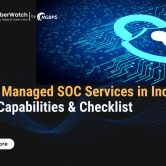Machines that run factories, power plants, or water systems use something called Operational Technology (OT). These systems are super important—but also big targets for cyberattacks.
Just one attack can shut everything down, put people at risk, and cost a lot of money.
So, how do you spot the problems before hackers do?
✅ The answer: Do a proper OT Security Risk Assessment.
Don’t worry—it’s not as complicated as it sounds. In this easy guide, we’ll walk you through the steps to:
Find out where your systems are weak
Know what to fix first
Make sure everything runs safely and securely
Let’s dive in and help you protect your OT systems the smart way.
Why You Can’t Skip an OT Security Risk Assessment
Before we jump into the steps, let’s talk about why this matters so much:
✅ Keeps Your Operations Running
If your OT systems aren’t secure, things can break down fast—production stops, safety is at risk, and you could face big fines.
✅ Protects Against Hackers
Cyberattacks on industrial systems (like pipelines or power grids) are becoming more common—and more dangerous. Don’t wait until it’s too late.
✅ Helps You Stay Compliant
An assessment helps you follow important rules and standards like NIST 800-82, IEC 62443, and CISA guidelines—so you stay audit-ready and protected.
🔐 How to Do an OT Security Risk Assessment – in 7 Simple Steps
Want to protect your factory, plant, or facility from cyber threats? Here’s how to break it down—step by step.
Step 1: Know What You’re Assessing
Don’t try to do everything at once. Start with the most important systems—the ones that would hurt your business the most if attacked.
🛠️ What to do:
- List all your OT systems (like PLCs, HMIs, SCADA, etc.)
- Highlight critical processes (what must keep running)
- Sketch out your network setup (is it air-gapped? connected to IT? cloud-based?)
💡 Pro Tip: Use tools like Nozomi Networks, Claroty, or Tenable.ot to scan and find devices automatically.
Step 2: Spot the Weak Points
Ask yourself: “How could someone break in?”
👾 Common threats:
- Ransomware (like LockerGoga, Ryuk)
- Human errors or disgruntled employees
- Attacks from third-party vendors
- Phishing emails sent to engineers
⚠️ Weak spots:
- Devices with old software
- Default or weak passwords
- Poorly separated IT and OT networks
💡 Pro Tip: Check the ICS-CERT database for known issues in OT devices.
Step 3: Understand the Risks
Not all risks are equal. Some are urgent, others not so much.
📊 Ask:
- Impact: If this system gets hit, how bad is it (safety, downtime, money, reputation)?
- Likelihood: Is it likely to be attacked?
🧠 Example:
An internet-connected gas pipeline controller = high risk
An old PLC with no network access = low risk
💡 Pro Tip: Use a simple risk chart (Low / Medium / High) to visualize it.
Step 4: Check What Security You Already Have
Figure out what protections are already in place.
🔍 Look for:
✔ Are your OT and IT networks separated?
✔ Who has access—and how is it controlled?
✔ Do you have tools that detect threats in real time?
✔ Are you patching systems regularly?
💡 Pro Tip: Do safe penetration testing to check for blind spots.
Step 5: Decide What to Fix First
Not everything needs fixing today. But some things do.
Rank each risk by:
- How critical it is
- How easy it is for attackers to exploit
Fixes can include:
- Immediate: Disconnect exposed systems
- Short-term: Add multi-factor login for remote users
- Long-term: Set up 24/7 OT monitoring
Step 6: Write It All Down
A clear report helps everyone understand what’s at risk—and what to do next.
Include:
- Full list of systems
- Found threats and weak spots
- Risk levels (High/Med/Low)
- What actions are recommended
💡 Pro Tip: Give leaders a short summary, and your tech team the full details.
Step 7: Keep It Going
OT security isn’t a one-time thing. It needs to be ongoing.
🔄 Do this regularly:
✅ Keep track of new devices (they add new risks)
✅ Review everything at least once a year
✅ Stay updated with alerts from CISA and ICS-CERT
✅ Quick OT Security Risk Assessment Checklist
Before you wrap up, make sure you’ve checked all the boxes:
✔ Focus on your most critical assets first
✔ Find weak spots and possible threats
✔ Judge how likely and how serious each risk is
✔ Review what protections you already have
✔ Fix the urgent stuff first, plan for the rest
✔ Write everything down clearly (for both tech teams & management)
✔ Keep monitoring and do it all again regularly
Need a Hand? We’ve Got You Covered
Feeling overwhelmed? You’re not alone—and you don’t have to figure it all out yourself.
We offer a free OT Security Gap Analysis to help you:
- Spot hidden risks in your ICS/SCADA setup
- Create a smart, step-by-step action plan
- Stay on top of compliance with NIST, IEC 62443, and more
👉 Talk to Our OT Security Experts – Book Your Free Assessment Now




